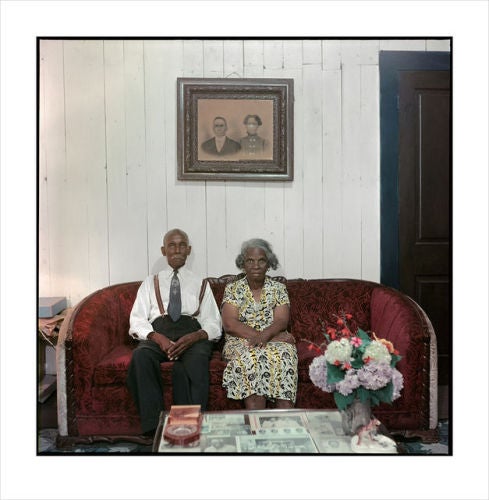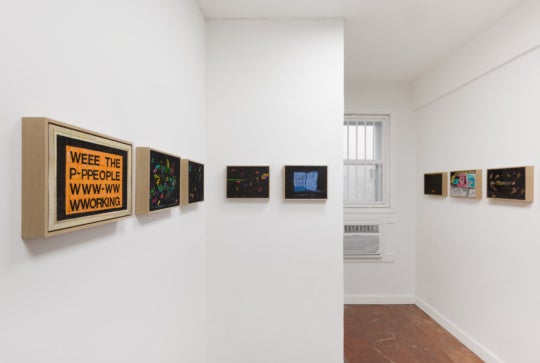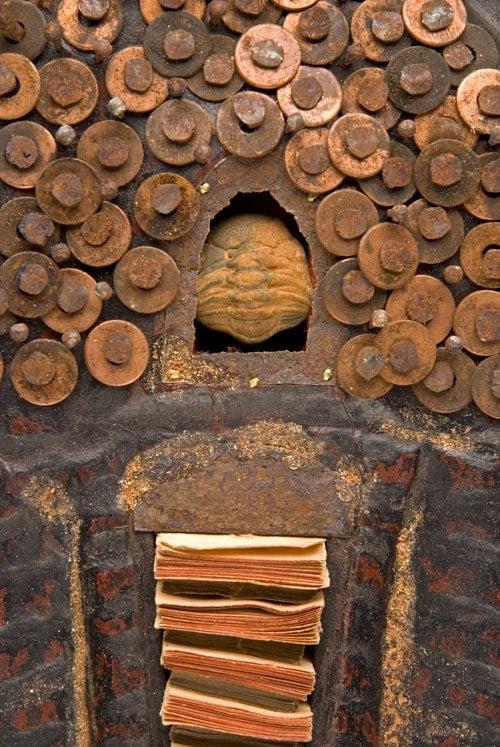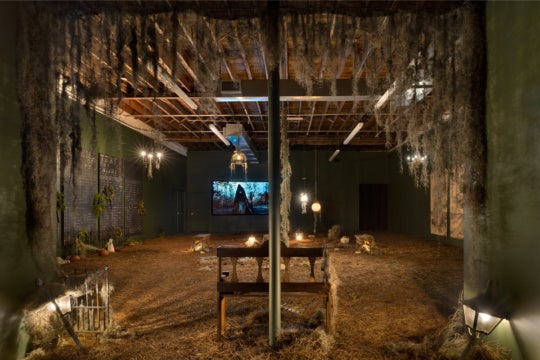
“Southern Exposure: The Do Good Fund Photographs Exhibit,” on display at the Lamar Dodd Art Center at LaGrange College in LaGrange, Georgia, through December 15, presents an eclectic and diverse range of photography. The Do Good Fund is a nonprofit venture whose mission is to collect notable photography in the Southeastern U.S. Rather than approach the collection with a specific Southern narrative in mind, the Do Good Fund seems to have set out simply to collect photographers of note who work within the region. Those photographers in turn utilize the craft of photography in various ways, focusing on the aesthetic, the colloquial, the cultural narrative, or at times images that transcend place altogether.
“Southern Exposure” includes 52 photographs. One first encounters two photos by Gordon Parks, originally shot for a Life magazine photo essay in 1956. Department Store, Mobile Alabama, 1956 depicts a mother and daughter standing beneath the words “Colored Entrance” in red neon. The portrait Mr. and Mrs. Albert Thornton, Mobile, Alabama contextualizes Parks’s photo essay; he worked with the Thornton family as subjects in his depiction of racial segregation in the South. Parks was unusual at the time for his use of color and for imbuing his subjects with the personality while dealing with a stark injustice. The historic significance of these works does not set the tone for the rest of the show, however, and we are encouraged in this context to look at these photos for their aesthetic merit as well as their historic importance.
Whitten Sabbatini presents us with a portrait of a father and son and their kill in Jeffery and Jr. Skinning a Deer. The vivid red shreds of meat clinging to the bloody skeleton contrast with the blue nitrile glove that the father wears to keep his knife hand clean. Narratively, this photo is a balance of nuances. The portrayal of the father and son is relaxed, somewhat touching. The bones beside them, divested of their meat and fur, seem nearly human.

Blue Ridge Paper Mill by Jeff Rich gives us an elevated vantage point over a mill wreathed in steam or smoke. Paper milling is an industry that many of us might be more familiar with through smell rather than sight. Rich transforms the subject into a thing of beauty. The image is painterly, bringing to mind the vaporous melding colors of JMW Turner’s atmospheres punctured with the geometric forms of ships. Here Turner’s ship is the mill, the atmospheric light the Carolina sun stymied by sulfurous clouds.
Portraits abound in this exhibition, but many of the strongest works focus on the deft use of setting. Rural space becomes abstract in Mike Smith’s Tilson Mountain, NC (shed with grass). Joshua Dudley Greer coaxes gemlike greens and blues out of a swimming hole in Ponce de Leon Springs, Florida. Jerry Seigel transforms an audience in the bleachers of a high school football field into a court of inquisitors in Homecoming. These photographers rely on the transformative power of their lenses to create strong aesthetic experiences that have thoughtful subtexts floating beneath the surface.

Two prints by Mark Steinmetz are anomalies in this exhibition due to the artist’s ability to remove subjects from their locale, their region, and even their time. Athens, GA shows a young woman reclined on the hood of a car, her head tilted to the side. Despite several objects that are clearly from the 1990s, the image feels like it could be from the ’50s. Similarly, in Athens, GA 1997 a car submerged in dead kudzu and a train pulling chemical tank cars receding on the ridge above seem like characters in some kind of Greek tragedy rather than local sights in North Georgia. He uses the inky blacks of silver printing and sharp selection of subjects to evoke the universal.
“Southern Exposure: The Do Good Fund Photographs” is an exhibition that surveys without attempting to define. We see various luminaries from a wide span of decades turning the dials up or down on history, symbolism, beauty, storytelling, and catharsis. A viewer will most likely leave without answering questions about what the South looks like or what epitomizes the South. This is probably for the best. In a region so large and so complex, we may already have too many voices answering those questions for us.
Orion Wertz is a painter and graphic novelist living in Columbus, Georgia. He is a professor at Columbus State University, where he teaches drawing and painting.




